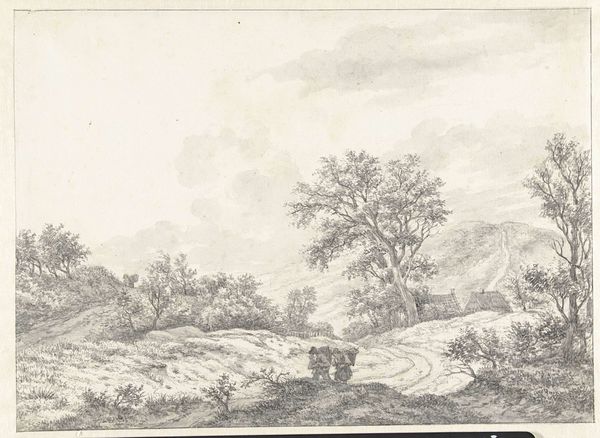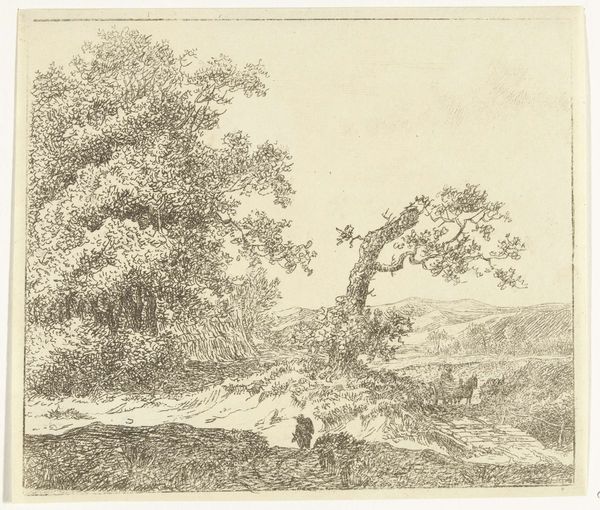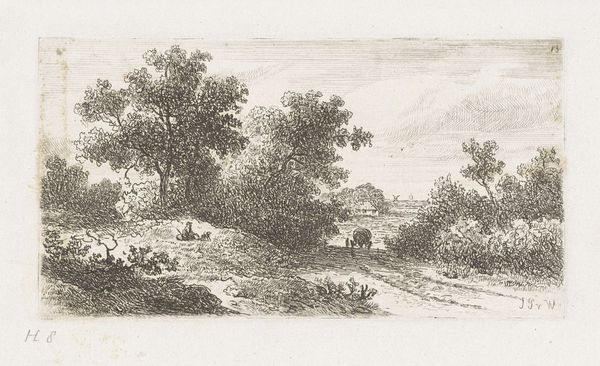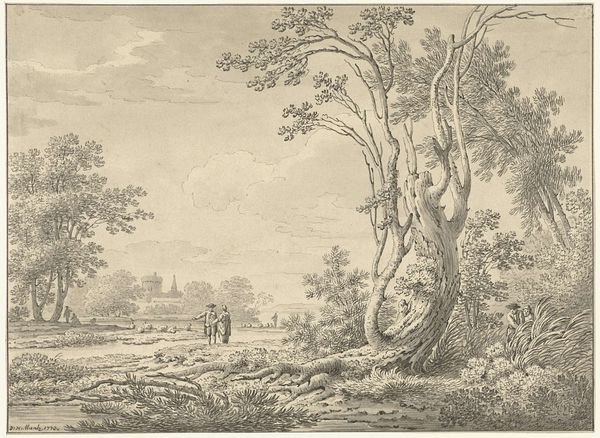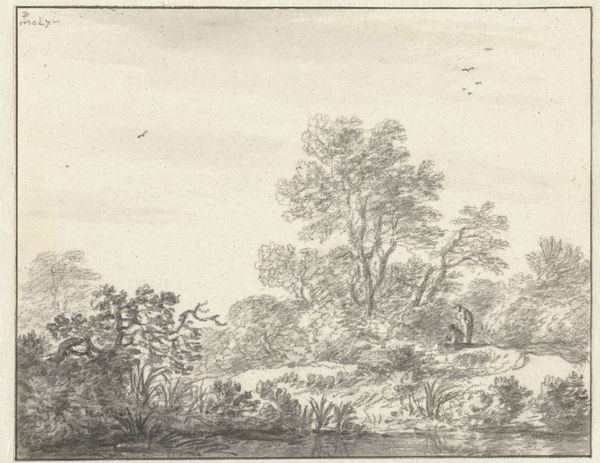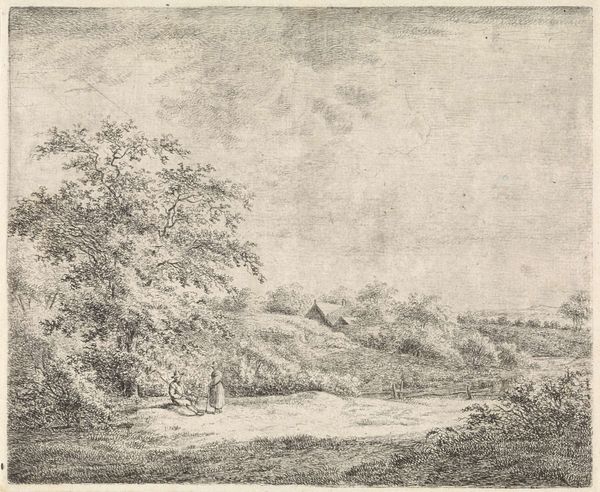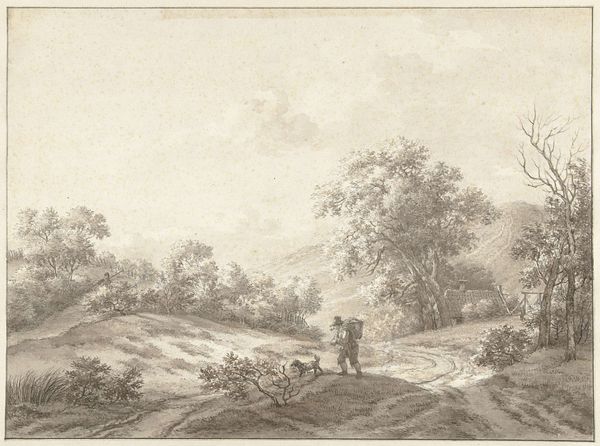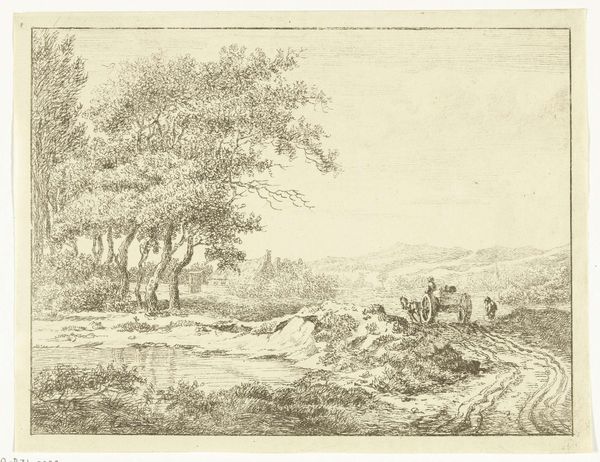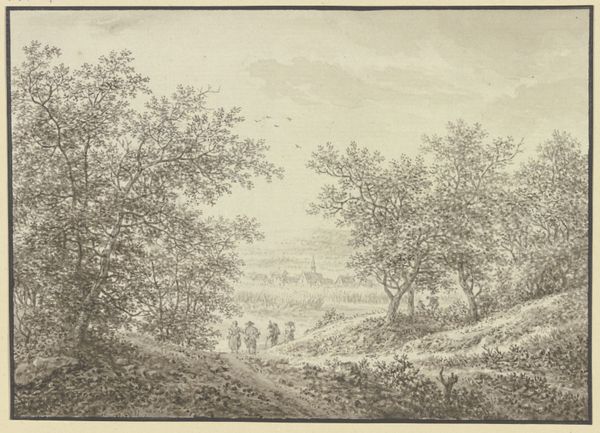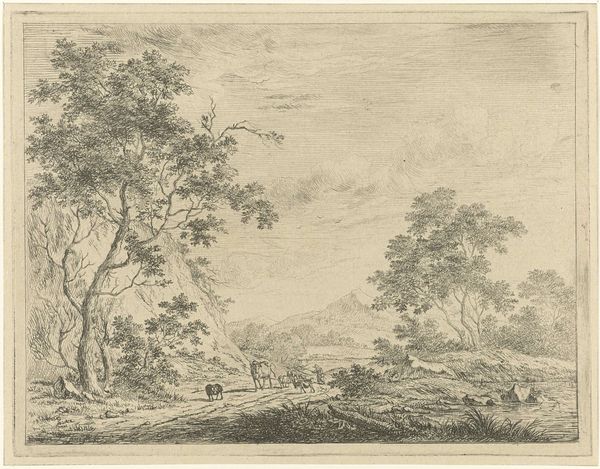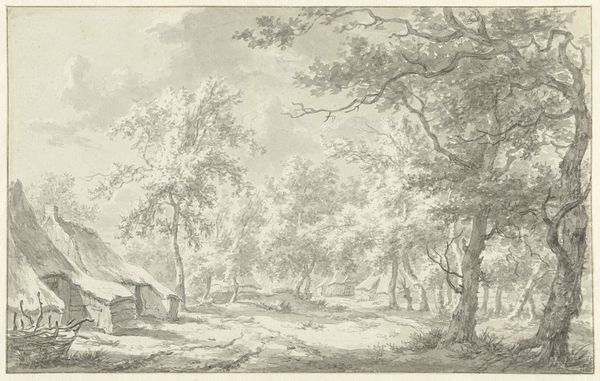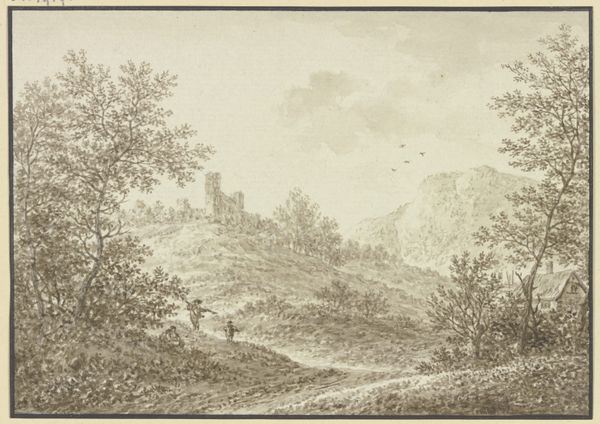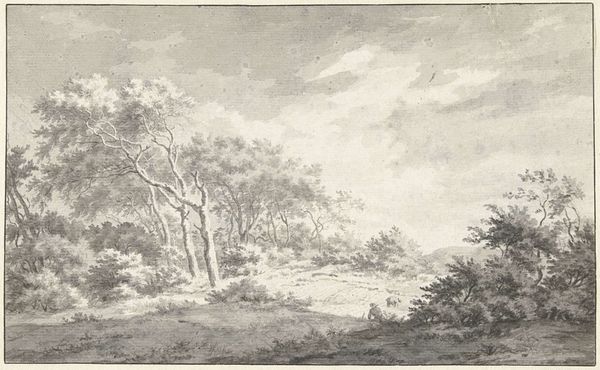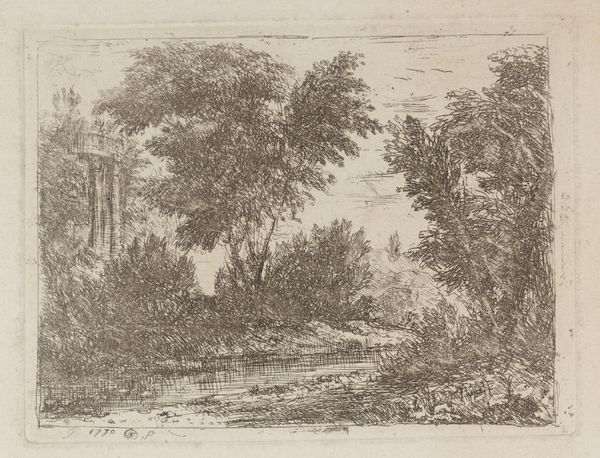
Dimensions: height 156 mm, width 208 mm
Copyright: Rijks Museum: Open Domain
Curator: Here we have Jacob Cats’ "Heuvelachtig landschap met reiswagen," a landscape drawing rendered around 1775 and held here at the Rijksmuseum. Editor: My first impression is a feeling of stillness, almost melancholic. The soft, muted tones and the vast open landscape evoke a sense of isolation. The lone figure by the road particularly stands out, what's his story? Curator: That solitary figure invites questions about social hierarchy and labour. This was created during a period of relative peace in the Netherlands. Consider the image's circulation. Prints like this would be widely available for different consumers. The figure by the road isn't idealized but is integrated into this romantic notion of the countryside. The horse and buggy show who *can* experience it with leisure. Editor: So, access to landscape and leisurely travel became a visual marker of social distinction? How does Cats's style enhance that message? The drawing, although detailed, has this dreamlike quality. Curator: Cats employs techniques of etching to evoke nature, influenced by earlier landscape artists, but we see a real emphasis on feeling. The figures almost blend into it all, yet are very controlled through the careful composition of a receding vista with a strong horizon line. Editor: That controlled composition contrasts with the wildness of the subject. This duality speaks to a certain control of nature, or maybe a yearning for it from those in the buggy and the one watching them go. What's especially compelling is how Cats captures light. It really adds to that pensive mood. This feels like a snapshot of social change—a transition between nature as labor to nature as leisure. Curator: I completely agree, and Cats also shows the relationship of that change, and relationship of its observers as well. Thanks to social historical methodologies, we can unpack the layers of privilege and aspiration encoded within what seems, on the surface, just another landscape. Editor: Examining art through the lenses of both historical context and artistic intent really enriches our understanding, transforming what could be just a simple sketch into a compelling narrative of its time.
Comments
No comments
Be the first to comment and join the conversation on the ultimate creative platform.
